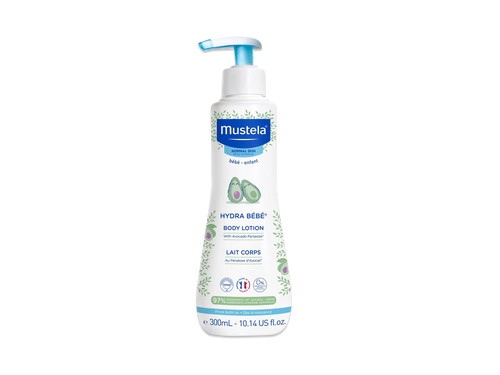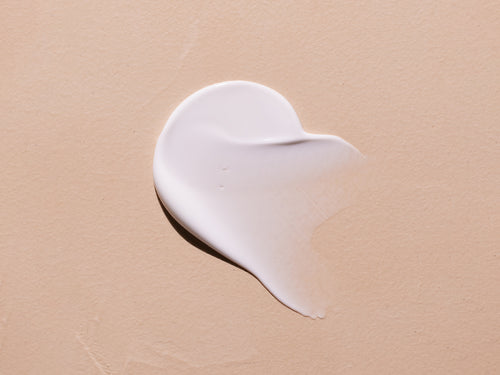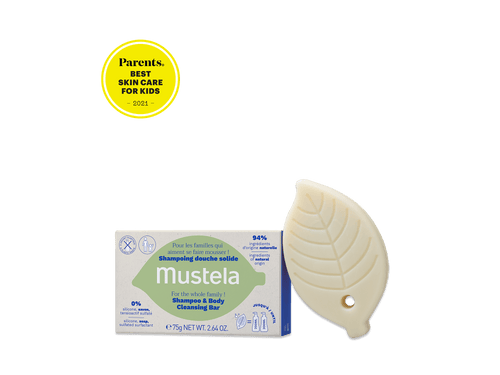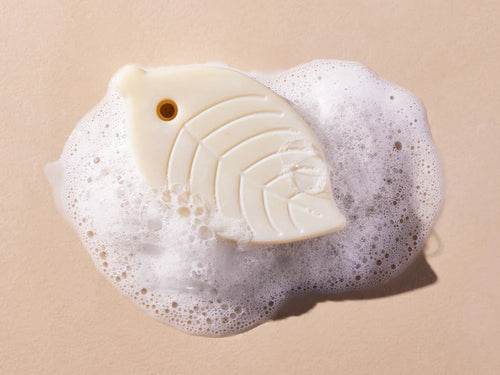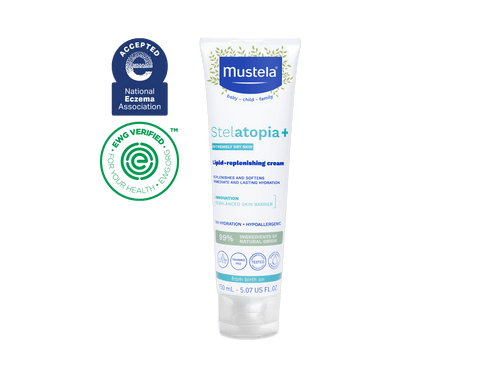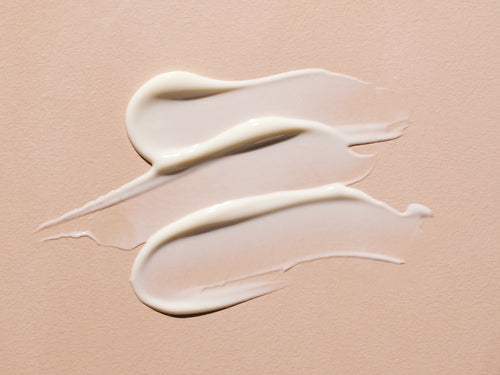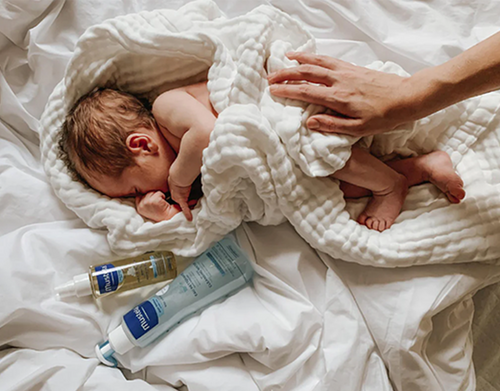If you’ve recently given birth to your first child, congratulations! The first few months of your baby’s life are an amazing time. But you might be wondering about how to bathe your newborn.
Not to worry! It’s actually an easy process and, once you get the hang of it, you’ll be a baby-bath expert in no time. Keep reading to find out how to bathe a newborn in 10 simple steps.
When To Begin Bathing Your Newborn

Many new moms aren’t sure when to begin bathing their newborns. The World Health Organization recommends waiting at least 24 hours after your baby’s birth to give them their first bath. There are several reasons for this.
First and foremost, your baby has just left the comfort of your tummy and will get cold easily. You’ll want to give your loved one some time to adjust to life outside the womb.
Experts believe that 24 to 48 hours is plenty of time to allow your infant to regulate their body temperature. The risk of hypothermia drops considerably after the 24-hour mark.
Second, your newborn will likely have a coat of vernix on their skin when you bring them home from the hospital. Vernix shouldn’t be washed off intentionally, as it provides several important benefits to your baby.
For instance, vernix has antibacterial properties and keeps your baby healthy. It also protects their delicate skin as they become accustomed to dry air. It’s best to let the vernix fall off your little one’s body naturally, which will happen in the first week or two of life.
To sum up, it’s safe to begin bathing your newborn 24 hours after birth. Or if you prefer, you can wait 48 hours. Whatever you choose, just be sure to start with sponge baths.
The American Association of Pediatrics recommends waiting for your newborn’s umbilical cord stump to fall off before submerging them in water. This normally happens sometime between one and three weeks after birth.
Sponge Baths
As we mentioned, don’t let your baby soak in the tub until their umbilical cord falls off. But you’ll need to wash your baby before then because that can take several weeks! The solution? A sponge bath!
Your supplies for a sponge bath will look different than supplies for a regular bath. Here’s what you’ll need to give your baby a sponge bath:
- Bucket or bowl of water
- Soft washcloth
- Gentle baby wash
- Dry towel
How To Give Your Baby A Sponge Bath
To give your baby a sponge bath, follow these steps:
1) Gather Supplies
Gather your supplies beforehand and set them on a sturdy surface, like a kitchen counter or table.
2) Lay Your Baby Down Next To Your Supplies
Lay your baby on a thick towel on a flat surface. This could be a changing table, bed, kitchen counter, or table. The towel makes the surface comfortable and warm for your baby.
If your baby is on a raised surface, make sure to use a safety strap, like the one on the changing table. If a safety strap isn’t available, always keep one hand on your baby, like when they’re on a counter or table.
3) Prepare Your Washcloth
Dip your washcloth in your bucket and wring it out to make it damp. Then use a small amount of a gentle cleanser, like our Gentle Cleansing Gel, and apply it to your damp washcloth.
4) Begin Washing Your Baby
Use your soapy washcloth and begin by washing your baby’s face first. Be careful not to get water in their eyes or mouth.
Dip the washcloth in your bucket of water and then repeat step 3 and continue washing the rest of their body, washing their diaper area last. Remember to avoid getting their umbilical cord wet.
Tips For Sponge Bathing Your Baby
Keep your baby covered in a warm towel while you’re bathing them. Only uncover the parts of your baby’s body that you’re washing, keeping the rest of their body warm and wrapped up in the towel.
Don’t forget to wash hard-to-see areas, like behind your baby’s ears, under their arms, around their neck, and the genital area. And if your baby has sweet little rolls on their legs and arms, move their skin to wash in-between the creases.
How Often You Should Bathe Your Newborn

Newborns don’t need daily baths in their first few months of life. In fact, bathing your loved one too often may dry out their delicate and easily irritated skin. Three baths per week is plenty, as long as you’re following a basic daily hygiene routine.
For example, always clean your baby’s bottom thoroughly when changing a dirty diaper. Your baby’s diaper area needs to be kept clean to avoid infections and rashes.
Use gentle baby wipes, like Mustela’s Certified Organic Water Wipes with Cotton and Aloe or our Cleansing Wipes with Avocado. These will keep your little one clean while protecting their delicate skin.
On the days when you aren’t bathing your newborn, you can use micellar water to cleanse their most important areas. Mustela No Rinse Cleansing Water is both gentle and effective! Use it to keep your little one clean without drying out their skin.
When using micellar water, focus on your baby’s face, hands, feet, neck, armpits, and the backs of their knees. These areas need to be cleansed more often than their arms, legs, and tummy.
Newborn Bathing Supplies

A few items are required to give your baby a bath, but you won’t need anything out of the ordinary. Here’s a list of what you will want to have on hand:
- A baby bathtub
- A soft towel
- An ultra-soft washcloth
- Gentle Cleansing Gel
- Gentle Shampoo
- A plastic cup
- A clean diaper and pair of clothes
That’s it! You may also want to add a few drops of bath oil to the water to make the experience more enjoyable for your loved one.
Once you’ve gathered all of the necessary supplies, you’re ready to get started!
How To Bathe A Newborn In 10 Simple Steps

At first, bathing your newborn might seem like a big ordeal. After a few weeks, however, giving your baby a bath will be as easy as changing their diaper.
We mentioned this earlier in the article, but it’s worth repeating: until your baby’s umbilical cord stump falls off, stick to sponge baths. The steps below are instructions for bathing your newborn once their umbilical cord is gone.
Here’s how to bathe a newborn in 10 easy steps!
1) Have All Of Your Supplies Handy
First things first: make sure to have all of the supplies we listed above easily available. Choose a stable place to set out all of the items. Some parents like to use a bathroom countertop, or even just the bathtub itself.
Other folks prefer to use a changing table or a kitchen countertop. Whatever surface you choose, just make sure that it’s safe and stable.
2) Fill Your Baby’s Bathtub With Water
The second step is to fill the bathtub with water. You only need two to three inches of water to bathe your newborn.
The water temperature should be roughly the same temperature as the human body—98.6 degrees Fahrenheit. Anywhere between 90° F and 100° F is perfect. Use a thermometer to make sure you’ve got the temperature just right.
3) Gently Place Your Newborn In The Bath

With one hand supporting the back of your baby’s head and the other under their bum, gently lower your baby into the bathtub. Don’t let them dive in head first! Let your little one dip their toes in first.
Expert tip: It may also be helpful to place a towel at the bottom of the bathtub, which makes it feel softer and prevents your baby from sliding around too much.
Bathing Your Baby In The Sink
Giving your baby a bath in the kitchen sink is another option. For this type of bath, you would use a sink insert instead of a traditional baby tub that you place in your bathtub.
Sink inserts are recommended for infants up to six months of age and sit inside your sink to give your baby a nice cushion against the hard, cold sides. This way, your newborn is comfortable for their bath and can relax!
These are also a great option if you’re running low on space or are traveling. What’s more, giving your baby a bath in the sink is better for your back! You can stand up while giving your baby a bath, instead of having to lean over the bathtub.

4) Monitor Your Baby Closely
Keep a close eye on your little one and make sure they’re enjoying bath time! Some newborns take to the water naturally and have a blast in the tub. On the other hand, some infants need time to get used to the feeling of being in water and being bathed.
Whatever the case may be, just monitor your baby closely. If they’re having fun, let them play in the tub for a while! If they seem uncomfortable, try to get through bathtime quickly.
5) Lather And Rinse Carefully
As we’re sure you already know, babies have extremely soft, delicate skin. That means you need to be very gentle when lathering on cleansing products and shampoos.
You may choose to use an ultra-soft washcloth, or you can simply use your hands. If you prefer to use your hands, remove any rings, bracelets, or watches you’re wearing.
After lathering, use a small plastic cup to rinse your baby off. Just scoop up a cup-full of water and gently pour it over a soapy area of your baby’s body. Be careful so that no soapy water gets in your loved one’s eyes or nose!
6) Start With Your Baby’s Head And Face
When bathing your newborn, it’s best to start with their head and face because you want to wash those areas before the water gets too soapy. This reduces the chance your bundle of joy will get soap in their eyes when you’re rinsing them off.
Again, you can use a washcloth or your hands. Some parents like to use cotton balls for their baby’s head and face, and that’s also a great option!
Cradle Cap
Maybe your baby has cradle cap and you’re not sure how to tackle it during bath time. First of all, cradle cap can present itself as thick and flaky skin on your baby’s scalp. It can be more trouble to deal with than it is harmful.
To effectively treat your baby’s cradle cap, try our Cradle Cap Duo. It gently exfoliates your baby’s scalp and rinses away flakes. It can also help reduce the chance of your baby’s cradle cap recurring.
This is important because cradle cap is most common in babies up to three months old but can last up to a year or longer.
To use correctly, apply a small amount to your baby’s wet hair and gently massage into their scalp. Let it sit for one to two minutes and then rinse it off carefully.
7) Wash Your Baby’s Arms, Legs, And Torso
Once you’ve lathered and rinsed your newborn’s head and face, you can focus on their arms, legs, tummy, and back. These areas tend to be a little easier to wash than the more sensitive places. Wash gently and continue to monitor your little one.

8) Don’t Forget All The Easy-To-Miss Places
Newborns have an abundance of adorable folds and rolls, which can be easy to miss when you're bathing them. Specifically, make sure to wash the folds around your newborn’s neck, wrists, knees, and elbows.
And don’t forget to clean behind your baby’s ears, as well as in-between their fingers and toes. Wash your baby’s genitals and diaper area thoroughly. It’s extremely important to clean this area well, but this task should always be left for last.
That way, any bacteria or germs that get washed off won’t dirty other areas of your loved one’s body, which helps prevent rashes and other skin conditions.
9) Gently Pat Your Newborn Dry
Once you’ve finished bathing your newborn, you can remove them from the bathtub and set them on a clean, soft towel. Use the towel to gently pat them dry, going in the same order that you washed their body.
Your baby might feel a little cold when first coming out of the bath, so it helps to dry them off quickly.
10) Add The Finishing Touches
Finally, apply a safe, gentle, moisturizing lotion, like Mustela’s Hydra Bebe Body Lotion. It protects your baby’s skin from becoming extremely dry and delivers long-lasting moisture.
And if your baby has eczema-prone skin, try our Stelatopia Emollient Cream or Stelatopia Emollient Face Cream and say good-bye to irritation! It moisturizes and soothes your baby’s skin.
What makes this cream so amazing is that it absorbs quickly into your baby’s skin and provides moisture to relieve any irritation, itching, or discomfort that accompanies eczema.
We also recommend soothing your little one after their bath with our Melting Massage Balm. Composed of 100% ingredients of natural origin, this balm has a luxurious texture perfect for baby massages.
Finally, put a new diaper on your newborn and dress them in a warm outfit. And voilà! You’ve got a clean, adorable baby on your hands.
How To Give Your Baby A Quick Clean-Up

Like we mentioned earlier, should you need to do a quick clean-up, try our No Rinse Cleansing Water, which is gentle enough to use on newborns! This is perfect to use when you’re out and about and not near your cleanser, a tub, or a sink.
It gently cleans your baby’s face, body, and diaper area while softening their skin. To apply, squirt a little bit of the cleansing water on a soft cloth, diaper wipe, or cotton ball and glide it over your baby’s skin.
When you’re done, simply pat your little one’s skin dry. No need to rinse or apply water!
You can also try our Organic Micellar Water with Olive Oil and Aloe. Made with EWG-verified olive oil and aloe, it’s ideal for your little one’s delicate skin!
Bonding With Your Newborn

Bath time is so much more than just getting your baby clean and freshened up. It’s a time to bond with your baby, a time to create memories.
Remember, you can start making bath time memories with your baby once their umbilical cord falls off, or make other memories with a sponge bath before then!
Three baths a week is plenty for your newborn. In-between those baths, whip out your No Rinse Cleaning Water for a quick clean-up. Remember to gather your baby’s bath supplies before bathing them, and keep our 10 tips in mind.
Now that you know how to bathe a newborn, you’ve got one less baby task to worry about! Gather your baby’s bath time products and you’ll be a baby-bathing pro before you know it!





